Despite Kim Kardashian’s cultural appropriation scandal caused by her underwear line brand, Kimono is still an important aspect of Japanese Culture and part of the Japanese identity.
But, who hasn’t dreamed of wearing a Kimono in Japan?
There are many ways to experience traditional Japanese culture, and we are sure that many of those who have dreamt or are currently dreaming of traveling to Japan are contemplating the idea of having this special experience.
Article Contents
Speaking of Tradition, Japan Is One of the Countries Where Tradition Is Very Alive and Gets Passed Down From Generation to Generation
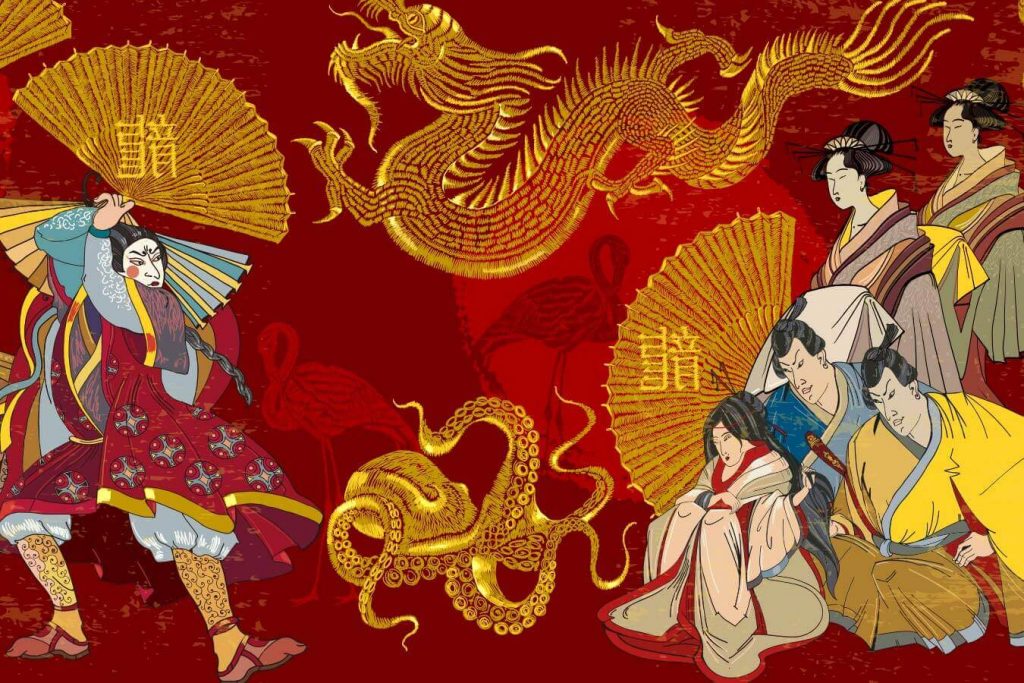
The history of the Kimono dates back to the Heian period (794 – 1185) when influenced by the Chinese culture, the first ancestors of the Kimono made their appearance. Until this period the clothing was a straight-line-cut of fabric sewed together that fitted every type of body shape.
By the Kamakura Period (1185-1333), the Kimono became an everyday clothing choice. In this period wearing Kimono in layers became a trendy fashion and people developed an ability to blend colors harmoniously.
Clothing evolved during the Edo period (1603-1868) into a unisex outer garment called “kosode”. Every Japanese person wore it, regardless of age, gender, or socio-economic position. Only the technique, fabric, color, motif, and style distinguished the wearer.
But it wasn’t until the Meiji Period (1868-1912) that the clothing item we now know as the Kimono began to be called by that name. Although during this period, Japan was heavily influenced by foreign cultures and the use of the Kimono gave way to western clothing.
Kimono boasts a history of over 1,000 years, and still nowadays it continues to be worn. Interestingly, it is now being embraced not only by the younger generations but also by foreigners, who are attracted by the beauty of this unique garment. They are starting to define new and unique styles, sometimes combining Kimono with Western clothing.
Your Hand Will Not Be Enough to Count All the Types of Kimono That Exist
This seemingly uncomplicated yet simultaneously intricate garment, crafted from a single piece of fabric, can convey information about the wearer’s age, gender, the formality of the occasion, and even their marital status. The embellishments, wearing style, and accompanying accessories contribute further nuances and intricacies. The Kimono comes with a multitude of guidelines dictating its proper wearing and suitable occasions.
From the extremely informal to the most formal Kimono, there is a wide range of types of Kimono style:
Furisode – 振袖
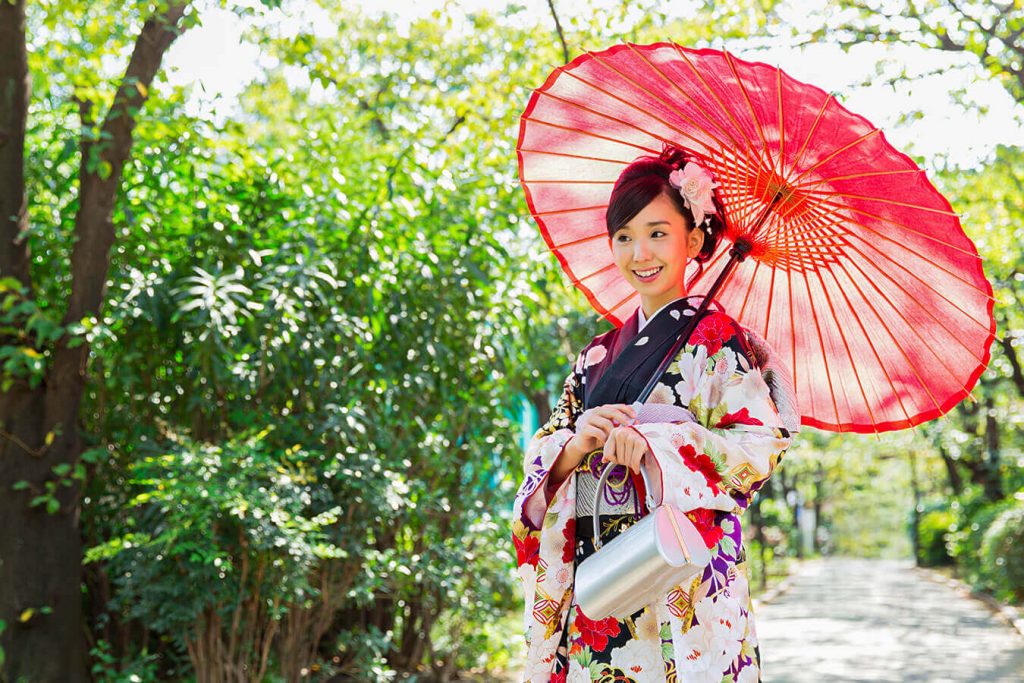
This type of Kimono has long sleeves and it is decorated with colored patterns that cover the whole garment. The longer the sleeve is, the more formal it is. This Kimono is worn by unmarried women only for special occasions like school graduation or coming of age ceremony.
Tomesode – 留袖

This Kimono is divided in two types: the Kuro Tomesode, which is a black Kimono, and Iro Tomesode, which is a colored Kimono.
It is the most formal Kimono worn by married women at formal events like weddings.
Hōmongi – 訪問着

This is like a “cocktail dress”, an elegant Kimono that has a pattern around the hem and sleeve and sometimes up over the body of the Kimono. It is a semi-formal Kimono for both married and unmarried women.
Tsukesage – 付け下げ

Tsukesage Kimonos have patterns placed higher on the body, aiming to create an elegant and elongated appearance. They are a versatile and stylish choice that strikes a balance between the more casual and formal types of Kimonos, making them suitable for a range of important events in Japanese culture.
Iromuji – 色無地

This type of Kimono has a plain color without any patterns. Iromuji Kimono can have any color, except black and white. It is worn by both married and unmarried women in formal events.
Mofuku – 喪服
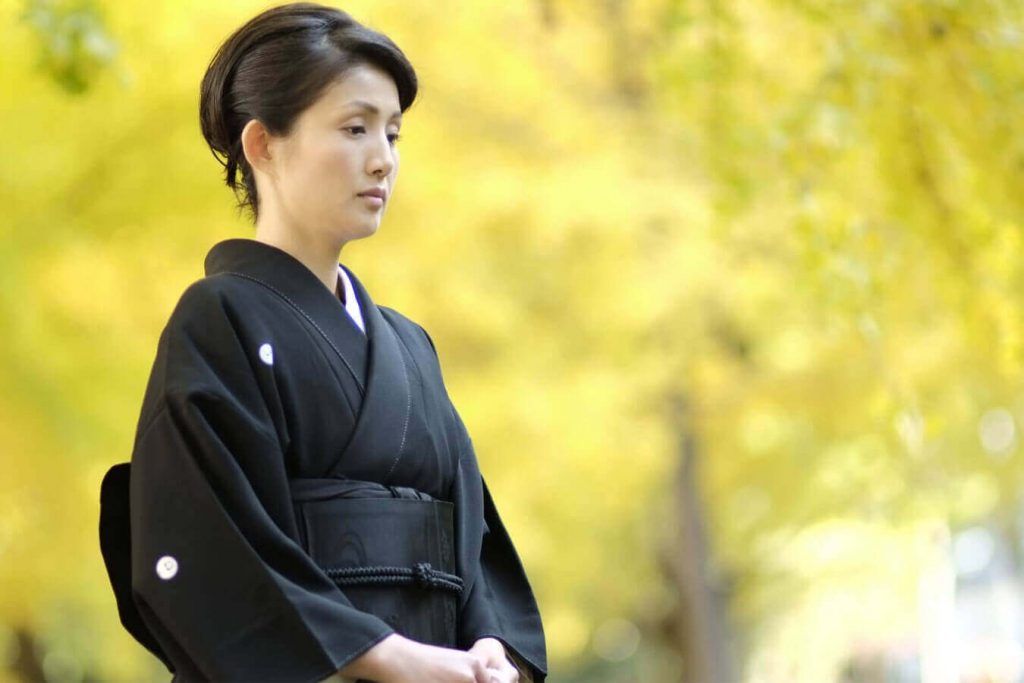
This type of Kimono is a plain-back silk Kimono with five crests over white undergarments. It is a formal Kimono worn by both males and females at burials.
Uchikake – 打ち掛け

This Kimono is a very formal Kimono worn by brides or stage performers. Uchikake Kimono uses red or white as the base colors and it is longer than other types of Kimono that often trails the floor.
Susohiki/Hikizuri – 裾引き・引きずり
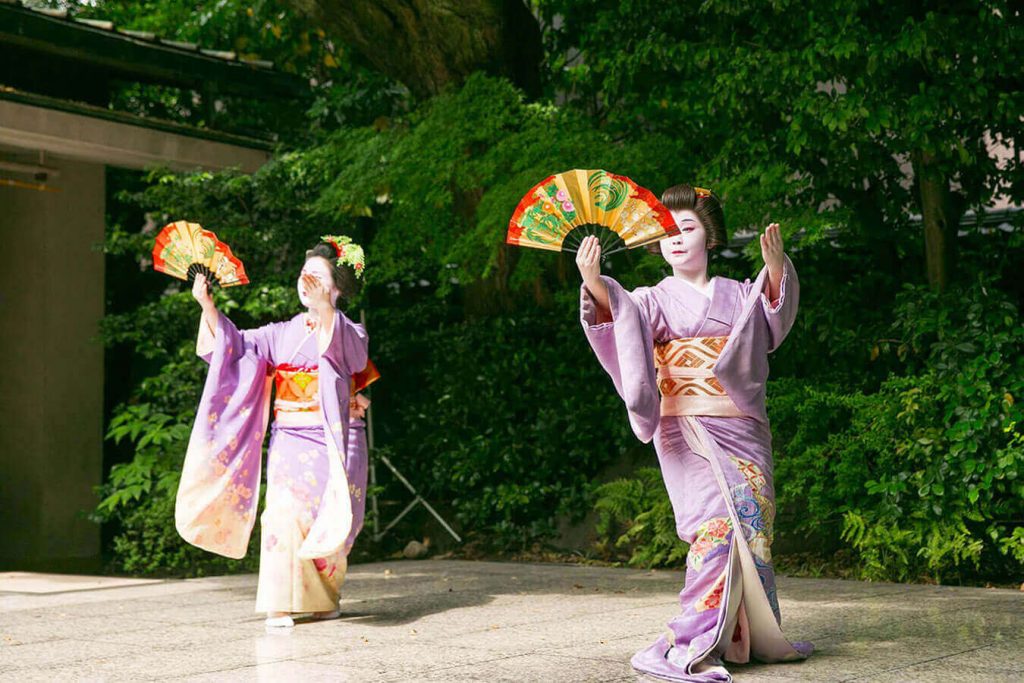
This type of Kimono is usually worn by geishas or stage performers of traditional Japanese dance (Nihon Buyō).
Odori Kimono – 踊り着物

This type of Kimono is a traditional Japanese dancer’s Kimono. This Kimono is very bright, and flashy, due to being associated with stage performances like festivals or public performances.
Komon – 小紋

This Kimono has a pattern covering the entire Kimono but with no particular direction or layout. Komon is the most informal Kimono and it is worn by married and unmarried women. Komon Kimono can be made from many kinds of fabric including silk, wool, polyester, and rayon.
Tsumugi – 紬

This Kimono, like the above Komon Kimono, is a casual silk Kimono that first is dyed and then weaved by craftsmen. The most famous styles of Tsumugi are Yuki, Oshima, Shiozawa, and Ueda-Tsumugi.
Yukata – 浴衣

This Kimono is an informal Kimono worn only at festivals during summer. Usually made of cotton or polyester, yukata uses bright colors with summer-themed designs. It is worn by men and women of all ages.
All the information provided above might seem a bit overwhelming. However, there’s no need to be overly concerned about the specifics. Simply wearing a Kimono is a unique experience that you should consider trying at least once in your lifetime. You don’t have to memorize all the details.
But Let’s First Answer This Question “Is It Rude for Foreigners to Wear Kimono?”
Some of you might be worried if it will be seen as inappropriate or even rude to wear a Kimono as a foreigner. Our personal opinion is “No, it is not rude”. But since we are foreigners as well we would like to share with you the thoughts of Japanese writer Saki Yoshida through her article “Is It Rude To Wear Kimono?” published on The Real Japan.
Get Dressed in a Beautiful Kimono by a Professional Kimono Dresser
Wearing a Kimono by yourself can be challenging if you haven’t been taught how to do so. Surprisingly, a large number of Japanese people don’t possess the knowledge of how to properly wear a Kimono, including the various components and accessories.
Wearing a Kimono requires both time and practice. Therefore, for those who wish to enjoy the experience without the struggle of getting dressed by yourself, we strongly recommend utilizing the services of a Kimono rental store.
In Nagoya, there are many Kimono rental stores where you can get the perfect outfit and also the perfect hairstyle! You can rent the Kimono for one day or even longer.
Here are some of your options:
Wasou Kajiura

Close to Osu Shopping Street, this Kimono rental shop is also a Kimono school with regular lessons that teach you how to wear a Kimono. The friendly staff will advise you about the Kimono that fits you best. Their location is perfect for exploring the Osu shopping streets in a stunning Kimono.
Wasou Kajiura (和装カジウラ)
Address: 4 Chome-10-40 Osu, Naka Ward, Nagoya, Aichi 460-0011, KajiuraTex Building 5F
Phone: (+81) 052-253-9477
Note: Reservation required.
Website (Japanese Only) | Google Maps
BISHO EN Shikemichi

“Bisho En Shikemichi” is a Kimono rental boutique in a beautifully refurbished, century-old folk house. This establishment expertly marries historical charm with contemporary sensibilities. Situated in the heart of the Shikemichi Old Town preservation district, it offers an ideal backdrop for capturing the grace of a Kimono. The store focuses on Kimono rentals as well as accessories, hair, and photography, allowing individuals to embrace the allure of diverse occasions, including weddings, coming-of-age ceremonies, graduations, and Shichi-Go-San festivities.
Bisho En Shikemichi (BISHO EN〜四間道〜)
Opening Hours: Weekdays: 11:00 – 18:00, weekends: 10:00 – 18:00; closed on Tuesdays and Wednesdays.
Address: 1 Chome-34-3 Nagono, Nishi Ward, Nagoya, Aichi 451-0042
Phone: (+81) 052-462-8073
Note: Reservation required.
Website | Google Maps
Vasara Nagoya Station

Vasara Kimono Rental, conveniently located near Nagoya Station offers a really big selection of both, traditional and modern Kimono. Their expertise extends to both locals and tourists, making it an ideal choice for those seeking to capture the essence of Nagoya while adorned in exquisite attire.
Vasara Nagoya Station(VASARA 名古屋駅前店)
Opening Hours: 9:00 – 18:00, every day.
Address: 2 Chome−45−10, Kawashima Building 5F, Meieki, Nakamura Ward, Nagoya 450-0042
Phone: (+81) 036-744-6725
Note: Same-day reservations are accepted upon availability. Booking in advance is recommended.
Website | Google Maps
Tsuki no Usagi Cafe

Located just a few steps from Nagoya Station this Cafe & Dining shop offers Taisho Period style Kimono called “Taisho Roman” (a “romantic vintage” Kimono).
The cafe interior has a retro atmosphere that makes you feel like you are back in the Taisho Period (1912 – 1926). The waitresses are dressed in Taisho Period clothes as well.
Tsuki no Usagi Cafe (フェダイニング月のうさぎ)
Opening Hours: 10:00 – 19:00 (Lunch 11:30 – 16:00); closed Tuesdays, Tuesday, 1st and 3rd Mondays.
Address: 1-30-15-2 Nagono, Nishi Ward, Nagoya, Aichi 451-0042
Note: Reservation is not required. Cash and credit cards are accepted.
Google Maps
Ayanishiki

At Ayanishiki, you can discover a lineup of over 1000 Kimonos and about 100 types of Hakama, all made possible through a partnership between this store and a company in Kyoto – the heart of Japanese clothing. Whether your preferences lean towards simple and retro-cute styles or modern fashion arrangements, the possibilities for dressing and coordination are limitless. With an English-friendly website, they are committed to assisting you in creating the perfect Kimono ensemble, ensuring you look fantastic in photos.
Ayanishiki(綾にしき)
Opening Hours: 9:30 – 18:00, closed on Mondays.
Address: 462-1 Koikecho, Proxy Square 1F, Meito Ward, Nagoya 465-0047
Phone: (+81) 052-799-7200
Note: Reservation required at least 7 days in advance.
Website | Google Maps
Langrie

Experience the enchantment of Nagoya with a touch of elegance at Langrie, a casual Kimono rental shop nestled in the heart of Osu. Specializing in a budget-friendly approach, Langrie ensures you can revel in the full Kimono experience without concerns of hidden costs. Their packages encompass hair setting, dressing, and secure luggage storage, providing you the opportunity to explore the city’s beauty in a playful style.
Langrie(ラングリエ)
Opening Hours: 10:00 – 17:00, closed on Mondays.
Address: 2−18−55 Osu, Dia Palace Osu No. 2 1004 (10th floor), Naka Ward, Nagoya 460-0011
Phone: (+81) 050-3555-3289
Note: Reservation required.
Website (Japanese only)| Google Maps
Inuyama Biyori Kimono Rental Shop

Located in Inuyama, a city 30 minutes from Nagoya Station by train. You can choose from a variety of Kimono, yukata, and obi. Find your best match!
Once dressed in your Kimono, take your time to visit the downtown area along with its many “kawaii” stores and coffee shops. Try to reach the Inuyama Castle.
Inuyama Biyori Kimono Rental Shop (犬山日和)
Opening Hours: 10:00 – 18:00; closed Tuesdays.
Address: Higashikoken-195 Inuyama, Aichi 484-0081
Phone: (+81) 0568-61-2532
Note: Reservation required. Cash and credit cards are accepted.
Website | Google Maps

Inuyama Komachi Kimono Rental Shop
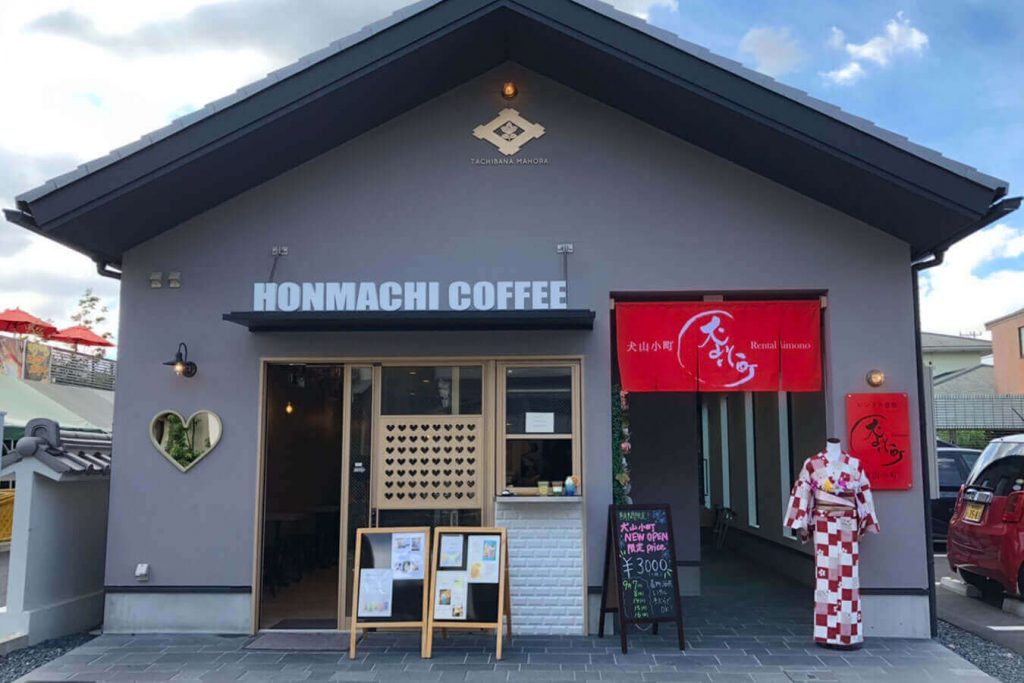
Enjoy wearing a casual Kimono, hakama, or yukata. This small Kimono rental shop has over 100 items to choose from including Kimono, hair accessories, Kimono shoes, and umbrellas.
Inuyama Komachi Kimono Rental Shop (犬山小町)
Opening Hours: 10:00 – 18:00; open every day.
Address: 21-3, Nishikoken, Inuyama, Aichi 484-0081
Phone: (+81) 0568-62-6001
Note: Reservation required. Cash and credit cards are accepted.
Website | Google Maps
Stroll Around the Many Kimono Shops in Nagoya
You can purchase a new or used Kimono at many specialized stores in and around Nagoya. They can also be found in department stores and shopping malls across the city. Here is a list of some of the best shops in town to go looking for
| NOTE: Finding out your size for a vintage Kimono might be a bit challenging because normally old Kimonos are small in size, but don’t give up! |
KOMEHYO Nagoya Honten Kimonokan

Probably the most famous Kimono store in Nagoya where you can buy new and second-hand Kimonos. The second-hand Kimonos are available on the second floor at a very affordable price. You can find all kinds of Kimonos, from winter Kimono to yukata and summer Kimono, as well as all types of obi and Kimono accessories. All products are labeled by a color code (yellow, red, and green). Each color represents a price, ranging from 1,000 yen to 4,000 yen.
They also sell second-hand Kimono and obi by weight, where the price is almost ridiculously cheap.
KOMEHYO Nagoya Honten Kimonokan (コメ兵名古屋本店 きもの館 )
Opening Hours: 10:30 – 19:00; closed the 1st and 3rd Wednesday.
Address: 2 Chome-19-22 Ōsu, Naka Ward, Nagoya, Aichi 460-0011
Phone: (+81) 052-203-0116
Note: cash and credit cards accepted
Website | Google Maps
KAZARIYA

This is a small Kimono shop that sells a very good selection of vintage and modern second-hand Kimono and obi. Even if you don’t know much about Kimono, the super-friendly owner helps you to match the colors and styles of every part of the Kimono. And you can also find original and unique handmade accessories like hair ornaments, earrings, and handbags. All were created by Japanese designers and craftsmen.
*Cash only.
KAZARIYA (飾屋)
Opening Hours: 11:00 – 18:00; open only Saturdays, Sundays, and national holidays.
Address: 4-10-40 Kajiuratex Building 3F, Ōsu, Naka Ward, Nagoya, Aichi 460-0011
Phone: (+81) 050-3639-5148
Note: cash only
Website | Google Maps
Daifukuya

This is a Kimono shop that sells both new and used Kimono at excellent prices.
On the third floor, you will find a wide selection of Kimono for a crazy price on the 28th of every month. A little recommendation here: come before the shop opens and prepare yourself for a “battle royale” with other (mostly Japanese) women.
Daifukuya (大福屋)
Opening Hours: 10:00 – 18:00; closed Tuesdays.
Address: 3-37−13 Osu, Naka Ward, Nagoya, Aichi 460-0011
Phone: (+81) 052-241-5588
Note: cash and credit cards accepted
Website (Japanese only) | Google Maps
Kimono & Cafe Bokuranoyume
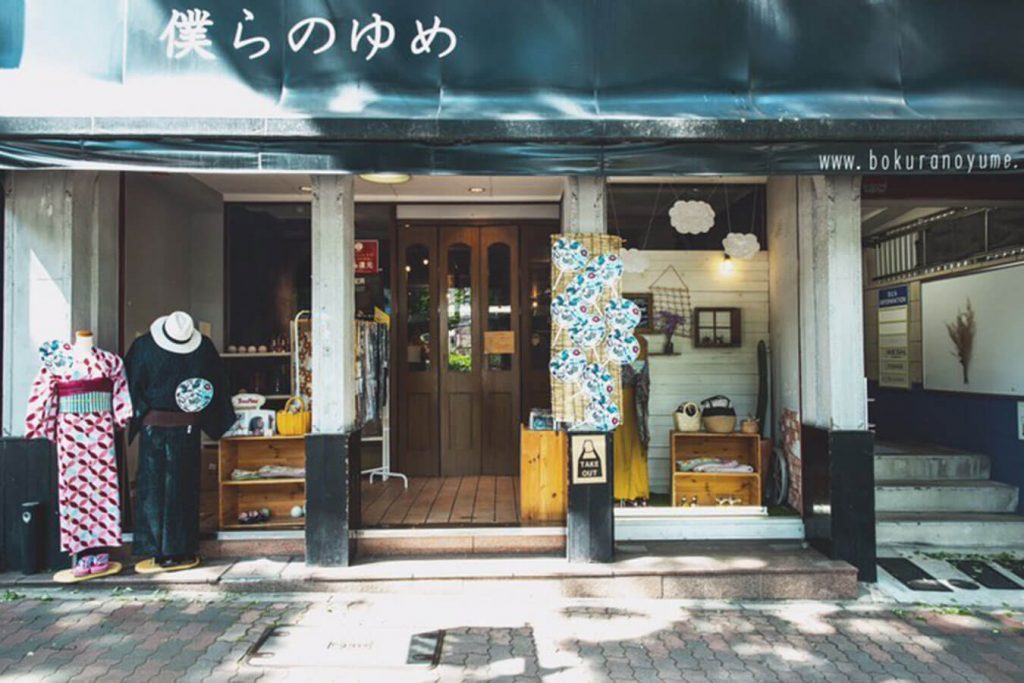
If you don’t care much about spending money on a brand new Kimono or yukata this is one of our recommendations.
This small Kimono shop also has a coffee shop indoors, so you can choose your Kimono while enjoying a drink. Compared with other Kimono shops, Bokuranoyume Kimono, yukata, and obi have a modern design and trendy color palette.
Kimono & Cafe bokuranoyume (僕らのゆめ)
Opening Hours: 12:00 – 20:00; closed Tuesdays.
Address: 3-32-23 S Building, Sakae, Naka Ward, Nagoya, Aichi 460-0008
Phone: (+81) 052-262-9911
Note: Reservation required. cash and credit cards accepted
Website (Japanese only) | Google Maps
One of the best occasions to enjoy wearing a Kimono is by going to a tea ceremony. Get to know the best places that are holding tea ceremonies in Nagoya.
This post has last been updated in August 2023.
Although we strive to provide you with the most accurate and up-to-date information possible, please note that changes may occur nonetheless. We recommend you confirm any relevant information such as event cancelations or changes, opening hours, or possible restrictions using a direct source. Please keep in mind that these sources might be in Japanese only.
Did you enjoy this article?
Be sure to follow us on Facebook for new articles every week, and see our Instagram for pictures and stories of Nagoya!
Share your comments below or message us using any of our SNS or send us an email.
Tag us 📲
If you make it out to one of these Onsen in Nagoya (or beyond), tag us on social media with #nagoyaisnotboring
Find out more about Nagoya in this article 7 Best Things to Do in Nagoya







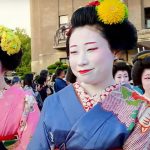


Like!! I blog frequently and I really thank you for your content. The article has truly peaked my interest.
Thanks for your message.
We are so glad to heard that.